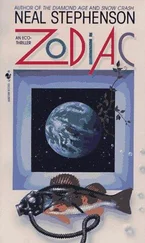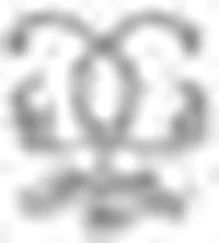“When’s the next—” Kath Two started to ask.
“Cayambe,” Ariane said. “Two days from now.”
“We are going to travel from Cayambe to Beringia on the surface?” Kath Two asked.
Ty and Bard both looked at her curiously.
“I haven’t said anything about Beringia,” Ariane pointed out.
“But it’s obviously where we’re going,” Kath Two said. “It’s where Beled and I — and a lot of other people — were sent on Survey. It’s where I saw what I saw, and told Beled about it. This whole thing was precipitated by that, wasn’t it?”
“It has been brewing for longer. Years,” Ariane said. “But you’re not wrong.”
“Ty’s from that part of the world — I can tell by his accent. Bard is from south of there, on Antimer,” Kath Two went on.
“We will head north from the Cayambe Socket, yes,” Ariane said.
“North a hell of a long way,” Ty pointed out.
“We are not prevented from using air transport,” Ariane reminded him.
“If we can get a big enough glider,” Kath Two put in, “the mountain wave will take us right up the Andes, the Sierras, and the Cascades in a day or two.”
“I am fairly confident,” Ariane said, “that we can get a big enough glider.”
THE UNDERSURFACE OF CRADLE, ONLY VISIBLE TO PEOPLE STANDING on the ground — more specifically, on the equator — looking up at it, was flat and generally egg-shaped, elongated in the direction of its east-west movement. On closer inspection its mostly smooth surface was interrupted from place to place by small hatches, carefully engineered protrusions, orifices, and other details. These were distributed around that otherwise featureless surface in a way that suggested orderly minds at work, addressing complications posed by the asymmetries of the city above.
In several places along the equator of New Earth, ground had been cleared and flattened, and reinforced concrete pads laid. These had the same size and shape as Cradle’s undersurface, and were equipped with their own hatches and orifices matching those on Cradle. Cradle could be neatly set down into one of these sockets whenever the Eye happened to be directly overhead. There it might reside for hours or days, taking on or discharging supplies, and otherwise communing with the surroundings. But it never stayed for long, since it had to follow the movements of the Eye, which always had urgent business elsewhere on the ring.
At such times, a traveler who knew nothing of orbiting tethers and the like, emerging from the woods or cresting some nearby hill, and coming into view of Cradle, would perceive it as a normal, which was to say stationary, city. The bucket handle arching high over its top was a heavy hint that something was a bit odd about it. Other than that, however, it would look, in that context, like a somewhat isolated hill fort.
Some of the more well-established sockets had begun to accumulate suburbs: ring-shaped towns that would come to life whenever Cradle was in residence. Most of them had the feel, and shared the purposes, of military bases, scientific installations, and frontier outposts. It had always been envisioned that many such would be built in time, creating a ring around the equator to match the habitat ring far above it, and that once New Earth was opened for general settlement they would grow into important cities. To visit one now, centuries before its glorious peak, was something of an acquired taste — a little like walking around a building site after foundations have been laid and a few walls framed. Builders, dreamers, and people of imagination enjoyed such places; others saw nothing.
Cayambe and Kenya had been the first two sockets, built in the most likely sites on South America and Africa respectively. Each numbered around ten thousand souls.
Cayambe’s namesake was a volcano at the intersection of the Andes and the equator, in what had once been the country of Ecuador. It had, of course, taken a beating during the Hard Rain, and resumed erupting for a while, but had now been dormant for about seven hundred years. In any case the Cayambe Socket had been built well clear of its most active vents, placing the volcano’s summit, which was once again snow covered, far enough away that it could be admired from any windows on Cradle that happened to be aimed in the right direction.
The Crow’s Nest’s tower afforded views in almost all directions, and so Tyuratam Lake, standing behind his bar two days later, polishing a glass with a towel, was able to look up between two tap handles and see the summit glide into view and then seemingly rise upward from the horizon as Cradle was lowered gingerly into its socket. Klaxons sounded all over Cradle and across the earthbound ring city that was now coming into view beyond its windscreens. Out of habit Ty stuffed the towel into the pocket of his trousers, letting it dangle down his leg, and reached out to steady himself against the bar. The underside of Cradle and the matching surface below it had been designed so that a disk of air would be trapped between them during the final meter of the descent, and act as a cushion. This was allowed to escape through a picket fence of vents, aimed upward around the periphery of Cradle, and so final docking was, as usual, signaled by a roar of escaping air and plumes of condensed humidity jetting upward into the blue sky over the Andes. The mildest of lurches caused stored glasses and tableware to clink together in cabinets all over the bar.
The klaxons and the vents went silent at the same time. Through the bar’s windows, which Ty had left cracked open, he could hear the customary smattering of applause rising up from the stony streets of Capitol Hill. He checked his timepiece. A few politicians and generals, who had leaned back from their breakfasts to observe the docking and admire the profile of Cayambe Volcano, bent forward again, picked up their forks, and resumed their conversations. Cradle had just become the largest city on New Earth, and was scheduled to remain so for twenty-four hours. Its system of windscreens, built to shield the city from the blast created by its movement through the atmosphere, now seemed more like a barbican, thrown up in some past age to defend an old city, but now merely a historical curiosity and a dividing line between neighborhoods.
Other than keeping a curious eye on all comings and goings through Cradle’s eight gates, Quarantine made no effort to control the mingling of populations. Cradle’s visits were so brief that to stop, examine, and question everyone passing between it and the sockets would have rendered the whole visit pointless.
Thanks to this relaxed policy, the time it took for an average pedestrian to get from the nearest of the eight gates to the Crow’s Nest was nine minutes. The first customer showed up in seven, breathing somewhat heavily, and requested a beer. Ty did not recognize him, but the next two faces that came in the door, thirty seconds later, were familiar. During the next quarter of an hour, the place filled up with a mixture of regulars (from Cradle and Cayambe alike) and curiosity seekers. Ty’s staff, well accustomed to these surges, began to open up back rooms. Extra cooks came up through one of the back entrances and began to make use of mise en place that had been prepped the night before.
Everything, in other words, ran smoothly. Which was how Ty liked it. The ability of the Crow’s Nest to accommodate a socket surge with no intervention from Ty, other than polishing a glass, was, in a sense, his life’s work. He had done every job it was possible to do in this place, from floor mopper on upward, and learned over time to select and delegate the work to others who could do it better. He had advanced, in other words, to higher levels of mental activity while always doing enough of the floor mopping and glass polishing to remain in physical contact with the business of the bar and in human contact with the staff. His real job — the job that the Owners paid him for — was to be an observer of the human condition as it was so richly displayed from day to day within these walls.
Читать дальше
Конец ознакомительного отрывка
Купить книгу





